Thule Stir 18L Handleiding
Bekijk gratis de handleiding van Thule Stir 18L (46 pagina’s), behorend tot de categorie Tas. Deze gids werd als nuttig beoordeeld door 91 mensen en kreeg gemiddeld 4.9 sterren uit 46 reviews. Heb je een vraag over Thule Stir 18L of wil je andere gebruikers van dit product iets vragen? Stel een vraag
Pagina 1/46

Technical Packs
Fine Tune Your Fit
Measuring the torso
Why is torso length important?
The most important consideration when buying a
backpack is your torso length – the measurement from
the base of your neck to the top of your hip bone. If
we’re getting technical, it’s the distance from the top
of your iliac crest to your C7 vertebra. No matter what
size of load you’re carrying, you want a backpack that
comfortably fits your frame. And your torso length, not
your height, determines which backpack suits you most.
How to measure torso length.
Lean your head forward and locate the most prominent bone at the base of your neck. This is your C7
vertebra and the top of your torso.
Put your hands on your hips so that your index fingers are in line with the top of the hip bone and
pointing towards your belly button, and your thumbs are pointing towards your spine. Draw an
imaginary line between your thumbs and follow the line to where it crosses your spine. This marks the
bottom of your torso. The top of your hip bone is also called your iliac crest. It’s the bone that supports
your backpack’s weight when the hipbelt wraps around your waist. Stand up straight and get a friend
to measure the distance from your C7 to the imaginary line between your thumbs. This is your torso
measurement.
Measuring the Hips
Why is hip size important?
When carrying large loads over long distances,
it’s much less tiring to carry the weight on your
hips than your shoulders. In fact, approximately
80% of a backpack’s load should be supported
by your hips. So it’s really important to find a
hipbelt that fits properly.
How to measure your hip size.
Grab your flexible measuring tape and wrap it around the top of your hips, not your waist. This is the
same spot where your thumb and index fingers will rest when measuring your torso length.
INCH
MM
INCH
MM

Fine tuning your fit
Once you have determined your torso and hipbelt sizing and adjusted your pack, it’s important to
fine tune your fit. To begin, loosen all the straps on the harness and hipbelt and load the pack with
5-10kg/15-20lbs of evenly distributed weight. Then follow the steps below to fully optimize your fit:
1. Hipbelt - Place the backpack on your back and position the top of the hip pad so that it’s about
3cm/1” above your iliac crest (top of your hipbone). Then connect your hipbelt buckle and tighten
the webbing. The bulk of the pack weight should now be supported by the hipbelt.
• Fit tip - The padded section should wrap around and cover the front of your hipbones but
there should be at least 3cm/1” of clearance on either side of the central hipbelt buckle.
2. Shoulder straps - After the hipbelt has been adjusted, pull down and back on the straps at the
bottom of the shoulder straps. This should pull the pack in towards your body. The place where
the top of your shoulder straps anchor into the backpanel should be 3-5cms/1-2” below the top of
your shoulders.
3. Load lifters - Your load lifter straps start at the top of your shoulder straps and connect with the
pack body above your shoulders. Pull on the straps so that they are taut, but be careful not to
over tighten as this will result in a gap forming between your shoulders and your shoulder straps.
• Fit tip - For larger packs, your load lifter straps should ideally form a 45-60 degree angle
between your shoulder straps and the body of the pack. For packs with a volume of less than
50L, because the torso height of the backpack is shorter, your load lifter straps may come
straight o of your shoulders or at a negative angle and connect to your pack body. In this
instance your load lifters act more like compression straps.
4. Sternum strap - Find your sternum strap between your shoulder straps and adjust it up or down
to a comfortable spot on your chest, then connect the buckle and tighten so the sternum strap is
snug.
5. Load stabilizer straps - Some of Thule’s larger technical backpacks are equipped with load
stabilizer straps that connect the hipbelt to the pack body. To better stabilize the load, pull the
load stabilizer straps forward towards the front of your body.
How to load your backpack
A well-packed backpack will feel more balanced, stable and
comfortable – so you are free to enjoy your experience on the trail.
Here are some tips on how to best pack your backpack.
1. Place your heaviest items, like your food, stove and water in the
middle of the pack, close to your spine. This keeps most of the
weight of the pack, its center of gravity, hugged close to the
body. If heavy items are packed too high, the load may feel too
unbalanced and tippy. If too low, the pack can feel saggy.
2. Lighter items such as your sleeping bag, rainfly and clothes
should be packed above, below and behind the heavy items.
3. Rain jackets, headlamps, snacks and other “must have” items
should be packed on the top or in the outer pockets of the pack.
Ligh t Items
Heavy Items
Light Items
Heavy Items

Funktionsrucksäcke
Optimale Passform und ergonomischer Sitz
Messung des Rumpfs
Warum ist die Rumpflänge so wichtig?
Beim Kauf eines Rucksacks gilt es in erster Linie
Ihre Rumpflänge zu beachten, also den Abstand
vom Halsansatz bis zur Höhe des Beckenknochens.
Medizinisch ausgedrückt wird also vom 7. Halswirbel
bis zum Beckenkamm gemessen. Ganz gleich, welche
Last Sie tragen, werden Sie sicherlich einen Rucksack
bevorzugen, der bequem am Körper sitzt. Welcher
Rucksack Ihnen am besten passt, wird durch die
Rumpflänge bestimmt, nicht durch die Größe.
So messen Sie die Rumpflänge.
Beugen Sie den Kopf nach vorn und ertasten Sie den am weitesten hervorstehenden Knochen
amHalsansatz. Dies ist Ihr 7. Halswirbel und das obere Ende Ihres Rumpfs.
Legen Sie die Hände in die Hüften, sodass Ihre Zeigefinger auf der Höhe des Beckenknochens
liegen und auf Ihren Bauchnabel zeigen, während Ihre Daumen auf die Wirbelsäule gerichtet
sind. Ziehen Sie nun eine imaginäre Linie zwischen Ihren Daumen und folgen Sie ihr, bis sie die
Wirbelsäule kreuzt. Damit ist das untere Ende Ihres Rumpfes markiert. Der obere Abschluss des
Beckenknochens wird auch als Beckenkamm bezeichnet. Auf diesem Knochen lagert das Gewicht
des Rucksacks, wenn der Hüftgurt umgelegt ist. Stehen Sie gerade und lassen Sie eine andere
Person den Abstand von Ihrem 7. Halswirbel zu der imaginären Linie zwischen Ihren Daumen
messen. Diese Messung ergibt die Rumpflänge.
Messung der Hüfte
Warum ist der Hüftumfang so wichtig?
Beim Tragen schwerer Lasten über lange
Strecken hinweg ist es weniger ermüdend,
wenn das Gewicht mit den Hüften getragen
wird anstatt mit den Schultern. Etwa 80% der
Last eines Rucksacks sollten auf den Hüften
lagern. Daher ist es äußerst wichtig, einen
optimal sitzenden Hüftgurt zu finden.
So messen Sie Ihren Hüftumfang.
Nehmen Sie ein flexibles Maßband und legen Sie es um Ihre Hüfte, nicht um Ihre Taille. Die Hüfte ist
dort, wo sich Ihre Daumen und Zeigefinger bei der Messung Ihrer Rumpflänge befinden.
INCH
MM
INCH
MM
Product specificaties
| Merk: | Thule |
| Categorie: | Tas |
| Model: | Stir 18L |
Heb je hulp nodig?
Als je hulp nodig hebt met Thule Stir 18L stel dan hieronder een vraag en andere gebruikers zullen je antwoorden
Handleiding Tas Thule
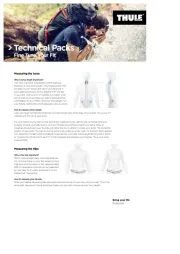
28 Maart 2025
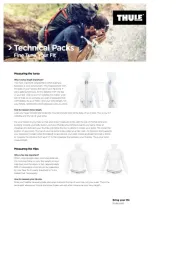
28 Maart 2025
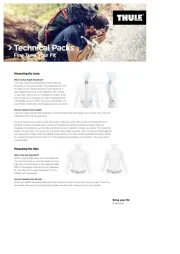
28 Maart 2025

23 April 2023

31 Maart 2023

28 Maart 2023

23 Maart 2023

20 Maart 2023

20 Maart 2023

19 Maart 2023
Handleiding Tas
- Topmove
- Mammut
- Wilderness Equipment
- Hauck
- Philips
- Mikrotik
- Manfrotto
- Salewa
- Basil
- Chief
- Kensington
- Evoc
- Easymaxx
- Blackburn
- CRU
Nieuwste handleidingen voor Tas
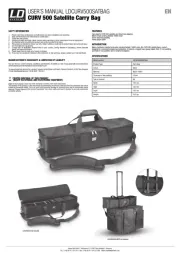
3 Augustus 2025
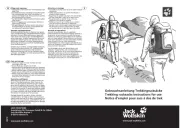
15 April 2025
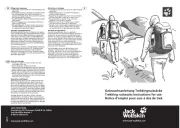
15 April 2025
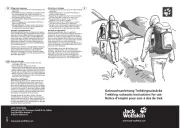
15 April 2025
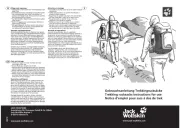
15 April 2025

15 April 2025
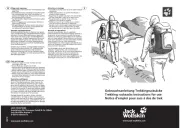
15 April 2025

15 April 2025
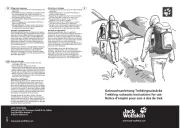
15 April 2025
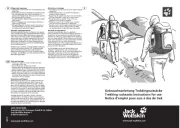
15 April 2025